Advertiser and Editorial Disclosure
Businesses with and without cash flow issues often keep a line of credit handy for unexpected cash flow challenges or expansion opportunities. A business line of credit is a flexible and often low-cost way to get short-term financing to cover working capital needs.
If an emergency comes up (say a client pays late, or your equipment needs an expensive repair) or a great opportunity presents itself (to buy inventory at a steep discount, for example, or to take on a rush job for a client) your line of credit may provide the funding you need without having to scramble for a new small business loan.
Here’s how to choose the right line of credit for your business so you can be ready for almost anything.
Compare your financing options with confidence
Spend more time crushing goals than crunching numbers. Instantly, compare your best financial options based on your unique business data. Know what business financing you can qualify for before you apply, with Nav.
What Is a Business Line of Credit?
A small business line of credit can help small business owners maintain consistent access to funds to smooth out the ebb and flow of changes in business expenses and revenues.
Rather than receiving a fixed amount of financing like you would with a loan, a line of credit gives you access to a certain amount of money, which you can borrow from, repay, and borrow from again.
Think of it like you would a credit card: It’s there when you need it.
Business Line of Credit Basics
In this article, we’ll cover several aspects of a business line of credit, including:
- How does a business line of credit work?
- Pros and cons of business lines of credit
- Benefits of a business line of credit
- How to qualify for a business line of credit
- How to get a business line of credit
Let’s explore what every small business owner needs to know about lines of credit.
How Does a Business Line of Credit Work?
A business line of credit is a flexible loan option for businesses. It may also be referred to as a revolving line of credit. You’re familiar with a line of credit if you use a credit card. It allows you to access funds from your credit line, pay back some or all of it, and access it again. With a line of credit, the business owner decides when, if, and how they will use that borrowed capital.
Interest is typically only charged for the amount of the credit line that is accessed, and interest rates may be fixed or variable. Variable interest rates typically change when interest rates in the economy change. Some lenders charge a draw fee every time you access the credit line.
In addition, there may be an origination fee, annual fee and/or a monthly maintenance fee if you don’t use your line of credit. For any line of credit you consider, you need to carefully read the terms offered to make sure you understand any fees that may be charged.
There will be a specified repayment period, but payments will vary depending on the amount borrowed. With some lines of credit (especially those from traditional banks), there may be a draw period during which you can access funds and make interest-only payments. After that, the business owner may enter a repayment period during which the outstanding balance must be repaid over a specific period of time.
Online lenders, on the other hand, often typically offer short-term lines of credit that fully amortize (or must be paid back) over a shorter time period, often 6-24 months.
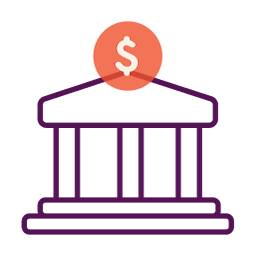
Access the business and personal credit data that lenders are actually seeing
Actively build business credit history, improve the metrics that matter, and access your best financing options – only at Nav.
Revolving Line of Credit for Small Business
A revolving line of credit is a type of small business loan that offers a flexible financial arrangement that provides access to a predetermined amount of funds, typically ranging from a few thousand to several hundred thousand dollars. Business owners can borrow from this pool of money and repay as needed.
Unlike traditional loans, where you receive a lump sum upfront and make fixed monthly payments, a revolving line of credit allows you to draw funds as necessary, pay interest only on the amount borrowed, and reuse the credit line as repayments are made. This makes it an ideal tool for managing cash flow fluctuations, covering short-term expenses, and seizing opportunities for growth without the need to reapply frequently.
What Is an Open Line of Credit?
A small business line of credit is an open line of credit. It gives borrowers ongoing access to a predetermined credit limit, which they can draw from at their discretion. Unlike traditional loans, where you receive a lump sum upfront and make fixed monthly payments, an open line of credit allows you to withdraw funds as needed, up to the approved limit, and interest is typically charged only on the amount borrowed.
You can repay the borrowed funds and reuse the credit line as often as you like, making it a versatile tool for managing cash flow fluctuations, covering short-term expenses, or taking advantage of opportunities without the need for frequent loan applications. Open lines of credit are commonly used by businesses and individuals to provide financial flexibility.
Pros and Cons of a Business Line of Credit
A line of credit can give you access to capital when you need it, but there are drawbacks to consider as well.
Pros
- Allows you to expand your business when opportunities arise.
- Offers working capital you need to pay the bills during a slow period.
- Meets your financing needs without paying interest on money you’re not using.
- No need to apply for a loan every time you need to access financing.
Cons
- You’ll have to make monthly payments (or sometimes weekly payments). If you can’t, you risk defaulting.
- If you provided a personal guarantee, you’ll put your personal finances at risk if you can’t pay the loan.
- Depending on what type of financing you qualify for, you may end up paying higher interest rates.
- If you run a startup that hasn’t been in business for two years or doesn’t have a strong credit profile, you may not qualify for the best terms.
Benefits of a Business Line of Credit
Here are a few examples of scenarios where your business may benefit from a business line of credit:
- Your business has seasonal fluctuations — perhaps your sales take a dip in the summer or winter, for example. A line of credit will help during periods of low sales.
- Your clients take weeks (or longer) to pay you for products or services you provide. You might need a line of credit to cover business expenses while you wait to get paid.
- You land a new client and need extra capital to cover the cost of labor and/or supplies. A line of credit can cover expenses during production.
- You have the opportunity to purchase equipment or inventory at a reduced cost. You can cover the bill with your line of credit while you wait for cash flow to catch up.
- You need financing in stages. Let’s say you’re renovating your commercial space. You might need $50,000 now, $7,000 in six months, and another $12,000 next year. A line of credit lets you get the cash you need when you need it rather than paying interest on a lump sum of money you won’t need for a while.
Depending on the type of loan or line of credit, your creditworthiness may be a major factor in determining eligibility. The higher your credit score, the better the terms you’ll get.
If you’re concerned about credit approval due to poor credit, look for loans that consider your annual revenues more than credit.
How to Get a Business Line of Credit
You can apply for a line of credit through a bank or credit union, an online lender, a business loan broker, or through an online marketplace where you’ll be able to shop among various lenders for the best line of credit for your business needs.
When it comes to business line of credit requirements, most lenders will evaluate the following factors during the application process:
- Time in business: Two years or more is ideal but some are more flexible.
- Personal credit scores and/or business credit scores: Lender qualifications vary, but many that check credit history require personal credit scores of 620-650 or higher, and banks usually require credit scores of 680-700+.
- Revenues: These will be verified via bank statements, financial statements, and/or tax returns.
If you do not have a business bank account, you will likely find it more difficult to qualify. In addition, some lenders will not lend to sole proprietors, so forming a business entity, such as an LLC, S corp, or C corp can be helpful.
Most business lines of credit are unsecured loans which means you don’t have to pledge personal or business assets such as equipment or real estate to qualify. (Some lenders may offer secured LOCs, or may require collateral, but many times these loans are unsecured.)
What Is a Commercial Line of Credit?
A commercial line of credit is simply another term for a business line of credit — they’re the same thing. It’s a pool of money that business owners can borrow from as needed for business purchases, and they typically only pay interest on what they owe. You can only use a commercial line of credit for expenses related to the business, so it’s not meant to be used for personal expenses.
Is There an Easiest Business Line of Credit to Get?
Different lenders have unique eligibility requirements for their borrowers, but an easy business line of credit for you to get is the one you qualify for. You may be able to get a line of credit with a credit score of 600-620, but your options will be limited. Working to increase your credit scores will be your best bet to increase the options you may qualify for. Signing up for multiple net-30 accounts or Nav Prime may help you establish and build your business credit over time.
Get the credit your business deserves
Join 250,000+ small business owners who built business credit history with Nav Prime — without the big bank barriers.
When a Business Line of Credit Is a Good Idea
Similar to most business financing options, the best time to get a line of credit for your business is when your business has healthy revenue and cash flow, rather than when your business is in a cash flow crunch. You’re more likely to qualify for the best terms when your business is in good financial shape and has no cash flow problems.
Remember: you’re only charged interest on the amount you borrow. If you secure a line of credit now you’re not obliged to use it, but it will be there when your business needs some extra capital.
Pro tip: While a business line of credit can be useful to most business owners, if you are looking for a lump sum of money to fund a one-time project or a long-term project, a small business loan (particularly a term loan) might be a better fit for you than a business line of credit.
Reasons Why a Bank Might Reduce Your Small Business Line of Credit
Banks may reduce a small business line of credit for various reasons, including:
- Changes in credit profile: If a business’s credit deteriorates, like a decrease in credit score, missed payments, or increased debt, a bank might see the business as a higher credit risk and decide to reduce the credit line.
- Economic conditions: Banks may reassess credit lines during economic downturns or uncertain financial conditions. Lenders aim to minimize their overall risk, which can result in reductions to existing credit lines.
- Business performance: If a business experiences a decline in revenue, profitability, or overall financial health, a bank might see it as less capable of paying back the existing credit line, leading to a reduction.
- Regulatory changes: Changes in regulatory requirements or banking policies can also impact the bank’s lending decisions, potentially leading to a reduction in a small business line of credit to maintain compliance with regulatory standards and risk management protocols.
Best Business Lines of Credit
You have a wealth of options available to you when it comes to a line of credit. Here are some we recommend checking out.
Quick Business Line of Credit
A business credit line can provide small and medium-sized businesses with quick access to short-term funding. It can give funding within a few business days, but the speed in which you can get a line of credit depends on the lender and the product.
This type of credit typically offers a digital loan application process with minimal paperwork, and approval decisions are often based on the business’s creditworthiness and financial stability. It provides companies with the flexibility to cover immediate expenses, manage cash flow fluctuations, or seize time-sensitive opportunities, making it an agile financial tool to support various business needs.
Small Business Line of Credit for Startups
Business lines of credit for new businesses may be available, although they may be harder to find and the terms may vary based on several factors. While established businesses with a proven track record and stable financials often find it easier to secure lines of credit, new businesses can improve their chances by:
- Building strong personal credit: Lenders may consider the personal credit history of the business owner, especially for startups. Maintaining a good personal credit score can be crucial.
- Creating a solid business plan: A well-thought-out business plan that outlines the company’s goals, strategies, and financial projections can instill confidence in lenders.
- Demonstrating revenue and cash flow: If the business has generated revenue and can show a positive cash flow, it may be more attractive to lenders.
- Exploring alternative lenders: Some alternative lenders specialize in providing financing to startups and new businesses, often with less stringent requirements than traditional banks.
- Offering collateral or personal guarantees: Providing collateral or personal guarantees can enhance the likelihood of approval since it reduces the lender’s risk.
It’s essential for new businesses to research and approach lenders that specialize in working with startups or small businesses and to carefully evaluate the terms and interest rates associated with any credit line to ensure it aligns with their financial needs and goals.
Bad Credit Business Line of Credit
Yes, there may be options for business lines of credit available to businesses with less-than-ideal or bad credit. Business line of credit requirements vary depending on the lender. If you are able to secure a line of credit with bad credit, it’s important to understand that these options may come with disadvantages and should be approached with caution.
First, you may be charged higher interest rates. Lenders are likely to charge higher interest rates for businesses with bad credit to offset the increased risk they perceive. This means that borrowing with bad credit can be more expensive.
You may also only qualify for smaller credit limits. This can limit the amount of funds available for borrowing. Additionally, your repayment terms might be shorter. Lenders may require shorter repayment terms on bad credit lines of credit, which can bring higher monthly payments. Carefully evaluate the terms, fees, and interest rates associated with these credit options and consider whether the benefits outweigh the costs.
The Right Line of Credit for Your Business
With all the options available it might be hard to choose the right line of credit, but we can help you find the option based on your business needs.
What Are the Average Loan Fees for a Small Business Line of Credit?
The average financing fees for a small business line of credit can vary depending on the lender, the specific terms of the credit line, and the creditworthiness of the business. Generally, line of credit fees can include:
- Interest rates: Interest rates can vary based on the prime rate, the business’s creditworthiness, and the overall financial health of the business. They can range from a few percentage points above the prime rate to higher rates for riskier borrowers.
- Origination fees: Some lenders may charge an origination fee when a line of credit is first established. This fee can range from 1% to 5% of the total credit line.
- Maintenance fees: Some lenders may charge an annual or monthly maintenance fee for keeping the line of credit open, typically ranging from 1% to 3% of the credit line.
- Transaction fees: These fees can apply to each transaction made using the line of credit and may range from 1% to 5% of the transaction amount.
It’s essential for small business owners to thoroughly review and understand the fee structure and terms associated with a small business line of credit before committing to any agreement with a lender. Comparing multiple offers from different lenders can help businesses secure the most favorable terms and fees for their specific financial needs.
What Is the Average Interest Rate for a Small Business Line of Credit?
The average interest rate for a small business line of credit can vary depending on factors such as the lender, the business’s creditworthiness, and the overall market conditions.
Generally, interest rates for small business lines of credit typically range from around 7% to 25%, but can be much higher. Businesses with strong credit scores, stable financial histories, and proven track records of revenue and profitability are more likely to secure lower interest rates, while businesses with lower credit scores or higher perceived risks may face higher interest rates.
Additionally, market fluctuations, changes in the prime rate, and specific terms of the credit agreement can all influence the interest rate applied to a small business line of credit.
Business Line of Credit vs. Business Credit Card
A business credit card is technically a line of credit. So why choose one over the other?
If you need cash, such as to pay contractors for remodeling work, a line of credit may be a better option. Also if you need tens or hundreds of thousands of dollars, a credit card won’t let you charge that much.
On the other hand, if you need to be able to purchase supplies or equipment at stores and online, a business credit card may be a better fit. Know that credit cards tend to have high interest rates, though some have great 0% interest welcome rates. You’ll want to pay off your balance in full to avoid high charges.
Small Business Lines of Credit vs. Traditional Loans
Small business lines of credit are best for relatively short-term financing. Traditional bank loans and SBA loans are often best suited to medium or long term financing needs.
On the other hand, lines of credit can be issued by traditional banks and credit unions, or by online lenders. And some banks offer online applications, so the lines can definitely be blurry here!
Secured vs. Unsecured Business Line of Credit
With a secured line of credit, the borrower puts up collateral as a security deposit on the line of credit. Putting up property as real estate as a form of collateral is common, other business assets owned by the business, such as equipment or inventory, may be used as well.
Secured credit lines may be preferred over unsecured lines by a traditional financial institution like a bank or credit union. The lender is taking on less risk, so they may grant a higher credit limit at a lower interest rate for a secured credit line. New businesses or businesses with poor business credit might only qualify for a secured line of credit because of the inherently higher risk associated with a shorter track record or a weak credit profile.
In contrast to a secured line, an unsecured business line of credit does not require specific collateral. Unsecured lines of credit can be more expensive because the lender assumes more risk. Personal and business credit cards are a type of unsecured line of credit. Businesses with many years under their belts and stellar business credit reports are more likely to qualify for unsecured business credit lines at reasonable rates.
What Are the Options for a Secured Business Line of Credit?
Many online lenders provide secured lines of credit that require you to put down collateral to qualify. These online lenders are typically easier to qualify for and apply for than traditional banks, but they often require some type of collateral. Additionally, SBA loans and lines of credit are usually secured, but these can be challenging to qualify for because it has more stringent borrower requirements. Work with Nav to find the best line of credit options for you based on your business details.
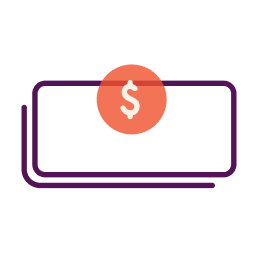
Access better funding options with a solution you can’t get anywhere else
Reduce the pain in financing with streamlined applications, instant offers and approval rates that are 3.5X higher than industry averages
Managing Your Small Business Line of Credit
Read the account disclosures to make sure you understand the terms of your LOC.
- What is the draw period?
- Is there a draw fee when you use the LOC?
- Is there any annual fee or inactivity fee?
- Can the LOC be closed if you don’t use it?
When possible, set up automatic payments so you don’t accidentally miss a payment. If you do, it’s possible your LOC will be closed.
Is It Good to Have Multiple Lines of Credit?
Having multiple lines of credit can be beneficial in certain situations, but it also comes with potential risks to be aware of.
Advantages of having multiple lines of credit
- Improved credit score: Responsible management of multiple lines of credit can positively impact your credit score. On-time payments and low credit utilization (the percentage of available credit you’re using) on different accounts demonstrate financial responsibility and can boost your creditworthiness.
- Diversified credit mix: Lenders often look favorably upon a diversified credit mix, which includes different types of credit such as credit cards, lines of credit, and term loans. This can indicate your ability to handle various financial responsibilities.
- Financial flexibility: Multiple credit lines can provide greater financial flexibility, allowing you to access funds when needed for various purposes, such as emergencies, investments, or major purchases.
Potential risks of having multiple lines of credit
- Overextending finances: Having access to multiple lines of credit can lead to overspending and debt if not managed carefully. It’s essential to avoid borrowing more than you can comfortably repay.
- Interest costs: Carrying balances on multiple credit lines can lead to higher interest costs over time, especially if you don’t pay off your balances in full each month.
- Credit inquiries: Opening multiple credit accounts in a short period can result in multiple hard credit inquiries, which can temporarily lower your credit score. Lenders may view this as a sign of financial distress.
- Missed payments: Managing multiple accounts requires vigilance. Missing payments on any of them can harm your credit and lead to additional fees and penalties.
Having multiple lines of credit can be advantageous for credit-building and financial flexibility, but it should be done responsibly. Make sure to monitor your accounts, pay your bills on time, and avoid excessive borrowing.
Maximizing the Potential of Your Small Business Line of Credit
One of the best ways to maximize the potential of your small business line of credit is to always think through how you’ll use it to help your business succeed. If you tap it, will that money help you make money? And if so, how?
If you find your business frequently using a line of credit because sales are dropping, then increasing sales and revenue should be the top priority. But if you can use your LOC as a tool to help your business grow, you can come out ahead.
Start your business credit journey
Build business credit, monitor credit health, and accelerate growth — all with Nav Prime.
This article was originally written on August 8, 2018 and updated on January 8, 2024.
Rate This Article
This article currently has 177 ratings with an average of 4.5 stars.
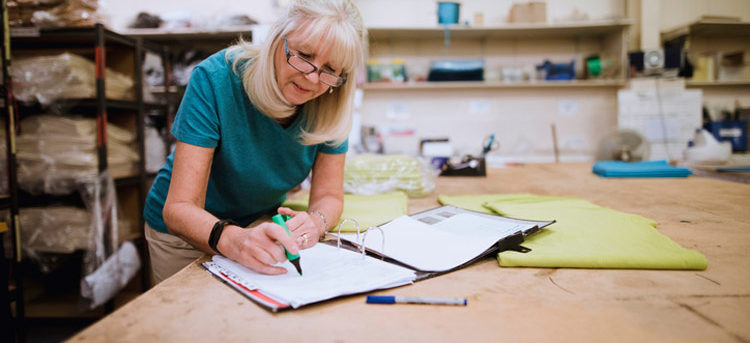
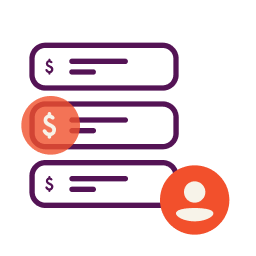

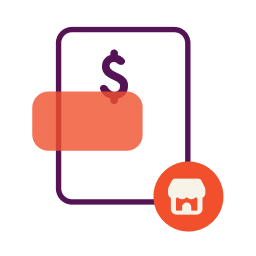
US
no
Hello, I am building business credit, I have +6 NET 30 great standing account, but I am kind of confused, basically for the first business Loan I get I will have to Personal Guarantee it ?.
Or as I get the best Business credit score I won’t have to PG it?.
Also in any of the cases we will always have to add collateral for the first loan? Are there Unsecured Businesses Loans without business collateral as Machinery, cash, and so on?
Thank you.
It depends on the lender’s policy whether you will have to provide a personal guarantee or collateral. Good business credit alone won’t usually mean no PG; you’ll also need to demonstrate revenues that meet the lender’s requirements, and meet their time in business requirements (for example, one year in business).
NO
no
Ok iam so confuse rite now I don’t know if I did it rite they told me it would take 9 weeks its been seven an I really need this money me an my girl friend are homeless for over three years we stay in our van with no heater so I really need this money soon possible amen God
yes
I have a question…how can a start up business get a loan for 10 or 20,000 if they have no revenue to show, or no business credit built-up? I am so confused about what is said when you have a business but its really based on your PG. It should be told that you will not succeed unless you have good credit and if you do not then prepare to not establish business credit for about 6 to 8 months after opening. There should be loans to where it can boost you regardless of your credit
A start up loan with no business revenue or time in business is extremely risky for the lender. If there is no personal guarantee the lender will have no recourse to collect if the business fails and many small businesses do. That’s why many lenders will require a good personal credit score and personal guarantee from the owner until the business has established strong business credit, revenues and time in business. That said there may be options. Have you seen our video on start up financing?
Do you know of any lenders that will extend a line of credit to a Tech start-up company? I’ve been in business for over three years.
Walter, Lending environments are changing daily. You can set up a call with our Credit & Lending Specialists – just keep in mind they are booked out right now due to demand for the SBA Cares Paycheck Protection loans. But we’ll help as soon as we can!
What companies and/or BLC’s do you recommend for persons wanting to do fix’n’flip rehabs in real estate, where $200,000 can be bought for half or less of ARV, repaired with minimal investment , then sold at or near full market value?
Benton, Nav offers a free lending marketplace where we work with a variety of lenders. You can check it out with a free Nav account (which won’t affect your credit scores). If you have any questions about your specific options you can always talk with our Credit & Lending team. Many of our Nav customers are involved in real estate.
Hi i am interested in a line of credit can you help with establishing a line of credit?
Mr. Bishop – We’re happy to help. I suggest you get a free Nav account here then use our free tools to search for financing, and build business credit.
Hi my name is mark I’m looking for a line of credit for my business.years in business 14